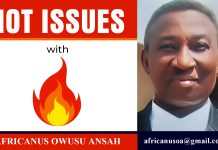Over the past 10 years, American and European reactions to the Arab Spring have demonstrated why Western democracies cannot be trusted with the cause of democracy around the world.
After brief excitement for the Arab upheavals for justice, freedom and jobs, Western powers resorted back to their usual appeasement of Arab dictators, no less in security affairs.
It is, therefore, no surprise that President Joe Biden’s “Summit for Democracy”, which convenes virtually this week, is met with scepticism in the region and beyond.
To add insult to injury, the Biden administration has applied selective criteria for issuing invitations, reflecting “American politics more than democratic values”.
From the Middle East, only Iraq and Israel are invited, a choice that is sad and cynical. Iraq, which suffered under US occupation for much of the past 20 years, is considered “not-free” by the US-based Freedom House. And Israel has for much of its existence denied the Palestinian people their freedom and human rights, while thriving on their ruin and occupation.
On the other hand, Turkey, a NATO ally, which ranks rather low but higher than Iraq on the Freedom House scale, is not invited. Freedom House, it should be noted, is largely subsidised by the US government.
But then again, Biden’s own record has long reflected US realpolitik in the Middle East, where interests and expediency trump values.
It was Biden, the Democratic senator who supported George W Bush’s destructive 2003 war in Iraq which was launched on false pretexts; and it was he, the liberal presidential candidate, who referred to himself as a Zionist when Israel denied the Palestinians their basic rights.
And it was Biden, Obama’s vice president, who argued in favour of the US maintaining support for the Mubarak government in Egypt in the face of popular upheaval, calling him an ally, not a strongman. Along with then-Secretary of State, Hillary Clinton, Biden defused Obama’s early support for the Arab Spring, rejecting the comparison with 1990s Eastern European upheavals that paved the way towards democracy.
And although President Biden has promised to put democracy and human rights at the centre of his foreign policy, he continues to be guided by realpolitik in foreign policy, lending greater support to Middle East despots whenever that suits US interests; which is – well – too often.
But what about the rest of the world?
Biden has arguably been assertive in his defence of democracy at home and abroad, which in fact became his rallying trump card against former US President Donald Trump in the 2020 elections.
His victory may have saved democracy in the most influential democracy, the United States, and could salvage what is left of US democratic standing around the world, where the power of its example has been as effective as the example of its power.
Enter the Summit for Democracy, which is meant to rally world democracies, strong and weak, to push for reform, fight corruption, and defend themselves against authoritarianism.
It is also meant to shore up America’s credibility and influence around the world and improve Washington’s position in its great power competition against China and Russia.
In that way, Biden’s campaign slogan, “America is Back”, takes the shape of an assertive America back in the saddle, championing the cause of freedom and democracy around the world, albeit at the cost of a potential new Cold War with authoritarian Beijing and Moscow.
In response, China and Russia have expressed alarm and indignation. In a joint article, the Chinese and Russian ambassadors to Washington have correctly warned the Biden administration against the perils of geopolitical escalation, arguing in favour of cooperation, accommodation and coexistence. They have also, rather disingenuously, defended their presumably socialist and federative democracies.
But President Biden is not letting go or easing up. He is putting China and Russia on the defensive, accusing them of sabre-rattling, especially in Taiwan and Ukraine, respectively, and threatening both with new tougher sanctions.
His recent virtual summits with his Chinese and Russian counterparts have done little to lessen tensions or tone down Washington’s rhetoric.
All of which makes one wonder if Biden is nostalgic for the Cold War era and its immediate aftermath, when a powerful America ruled supreme, and thus insists on framing today’s great power politics in strictly ideological terms – in terms of democracy vs authoritarianism, where the latter replaces communism as the new global evil. If indeed he is, Biden will find an enthusiastic partner in Russian President Vladimir Putin who is no less nostalgic for the old days of the Soviet Union.
It is certainly a clever way to rally close partners and distant allies behind US leadership, especially the sceptical Europeans, who have been trying to find their own independent voice in an increasingly polarised world.
But the dangers of a new Cold War for global stability and prosperity are too serious to ignore. It certainly does not bode well for the much-needed cooperation on urgent global challenges, such as climate change, pandemics, nuclear proliferation, and human security, especially in the ill-fated Middle East.
Cold War; Brief History
The Cold War was a period of geopolitical tension between the United States and the Soviet Union and their respective allies, the Western Bloc and the Eastern Bloc, which began following World War II. Historians do not fully agree on its starting and ending points, but the period is generally considered to span the 1947 Truman Doctrine (12 March 1947) to the 1991 Dissolution of the Soviet Union (26 December 1991).[1] The term cold war is used because there was no large-scale fighting directly between the two superpowers, but they each supported major regional conflicts known as proxy wars. The conflict was based around the ideological and geopolitical struggle for global influence by these two superpowers, following their temporary alliance and victory against Nazi Germany in 1945.[2] Aside from the nuclear arsenal development and conventional military deployment, the struggle for dominance was expressed via indirect means such as psychological warfare, propaganda campaigns, espionage, far-reaching embargoes, rivalry at sports events and technological competitions such as the Space Race.
The Western Bloc was led by the United States as well as the other First World nations of the Western Bloc that were generally liberal democratic but tied to a network of the authoritarian states, most of which were their former colonies.[3][A] The Eastern Bloc was led by the Soviet Union and its Communist Party, which had an influence across the Second World. The US government supported right-wing governments and uprisings across the world, while the Soviet government funded communist parties and revolutions around the world. As nearly all the colonial states achieved independence in the period 1945–1960, they became Third World battlefields in the Cold War.
The first phase of the Cold War began shortly after the end of the Second World War in 1945. The United States and its allies created the NATO military alliance in 1949 in the apprehension of a Soviet attack and termed their global policy against Soviet influence containment. The Soviet Union formed the Warsaw Pact in 1955 in response to NATO. Major crises of this phase included the 1948–49 Berlin Blockade, the 1927–1949 Chinese Civil War, the 1950–1953 Korean War, the 1956 Hungarian Revolution, the 1956 Suez Crisis, the Berlin Crisis of 1961 and the 1962 Cuban Missile Crisis. The US and the USSR competed for influence in Latin America, the Middle East, and the decolonizing states of Africa and Asia.
Following the Cuban Missile Crisis, a new phase began that saw the Sino-Soviet split between China and the Soviet Union complicate relations within the Communist sphere, while France, a Western Bloc state, began to demand greater autonomy of action. The USSR invaded Czechoslovakia to suppress the 1968 Prague Spring, while the US experienced internal turmoil from the civil rights movement and opposition to the Vietnam War. In the 1960s–70s, an international peace movement took root among citizens around the world. Movements against nuclear arms testing and for nuclear disarmament took place, with large anti-war protests. By the 1970s, both sides had started making allowances for peace and security, ushering in a period of détente that saw the Strategic Arms Limitation Talks and the US opening relations with the People’s Republic of China as a strategic counterweight to the USSR. A number of self-proclaimed Marxist regimes were formed in the second half of the 1970s in the Third World, including Angola, Mozambique, Ethiopia, Cambodia, Afghanistan and Nicaragua.
Détente collapsed at the end of the decade with the beginning of the Soviet–Afghan War in 1979. The early 1980s was another period of elevated tension. The United States increased diplomatic, military, and economic pressures on the Soviet Union, at a time when it was already suffering from economic stagnation. In the mid-1980s, the new Soviet leader Mikhail Gorbachev introduced the liberalizing reforms of glasnost (“openness”, c. 1985) and perestroika (“reorganization”, 1987) and ended Soviet involvement in Afghanistan in 1989. Pressures for national sovereignty grew stronger in Eastern Europe, and Gorbachev refused to militarily support their governments any longer.
In 1989, the fall of the Iron Curtain after the Pan-European Picnic and a peaceful wave of revolutions (with the exception of Romania and Afghanistan) overthrew almost all communist governments of the Eastern Bloc. The Communist Party of the Soviet Union itself lost control in the Soviet Union and was banned following an abortive coup attempt in August 1991. This in turn led to the formal dissolution of the USSR in December 1991, the declaration of independence of its constituent republics and the collapse of communist governments across much of Africa and Asia. The United States was left as the world’s only superpower.
The Cold War and its events have left a significant legacy. It is often referred to in popular culture, especially with themes of espionage and the threat of nuclear warfare.
Credit: Aljazeera & wikipedia.org









